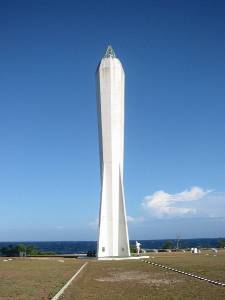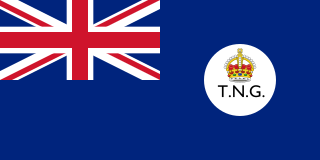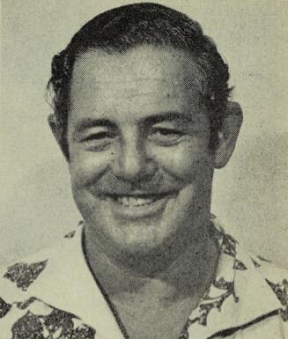Copra plantations in New Guinea have been cultivated since the late 19th century, originally by German colonialists. They were continued by Australian interests following World War I.
Copra is the fourth most significant agriculture cash crop of PNG. An estimated 2.6 million people are engaged in coconut activities in PNG to either generate income and/or as food to supplement their livelihoods. [1]
In 1884, German settlers arrived in eastern New Guinea (now part of Papua New Guinea), who planted Coconut palms (Cocos nucifera) for the production of copra, the dried flesh of the coconut. They established the colony of German New Guinea in the north eastern quarter of the island and numerous coconut plantations around coastal areas. They were afraid of venturing too far inland. [2] To counter the growing German presence in the region, the Australian state of Queensland established the Territory of Papua as a de facto possession covering approximately the south east third of the island. [2] Both the Queensland and German plantations thrived, providing opulent living conditions for the expatriates. Grand mansions were built on the plantations, complete with luxury furnishings. [2] Much of the labour was performed by New Guinea natives. [3] The towns of Port Moresby and Rabaul were founded as a result of the economic activity surrounding the plantations. [2]
At the start of the First World War, in 1914, Australia sent a small military force to take over the German possessions in the South Pacific. Two Germans were killed in the process, while the remaining German plantation owners were initially sent back to work on their plantations. [2] The 1919 Treaty of Versailles saw Germany lose all its overseas possessions, including German New Guinea, [3] which became the Territory of New Guinea, a League of Nations mandate Territory under Australian administration.
The property of German planters was expropriated in the 1920s, and the coconut plantations were offered for sale to returning soldiers, many financed by the large trading companies which would manage the plantations. [3]
By the 1980s, copra production in New Guinea was dominated by two Australian trading companies: Burns Philp and W. R. Carpenter & Co. [3]
In 1985 the PNG government established the Copra Marketing Board, [4] to take over copra production in PNG. The Board saw the virtual decimation of the copra industry in PNG, which was ruined by American soy beans in the late 1980s. [3] Copra exports fell to negligible levels by 2004. According to the PNG Central Bank, the PNG’s copra exports in 2003 were 3,600 tons, levels at which copra exports could be said to be close to extinction. Exports rose to more than 9,100 tons in 2004.
In 1993, Kokonas Industri Koporasen (KIK) built a copra mill in Madang and effectively gained monopoly control over the marketing of PNG copra. In 2003 the government ended KIK’s monopoly powers over marketing. A year later KIK suffered losses that forced the group to call in liquidator, PNG Coconut Commodities, Rex Paki, who in April 2004, sold the Manang mill to Australian-owned Coconut Oil Production Madang Ltd (COPM, owned by Donald Brownlie Fleming) for K7.8 million (US$2.4 million). [5]
The country’s only other coconut mill is owned by the Carpenter Group located in Rabaul.

The prehistory of Papua New Guinea can be traced to about 50,000–60,000 years ago, when people first migrated towards the Australian continent. The written history began when European navigators first sighted New Guinea in the early part of the 17th century.

Transport in Papua New Guinea is mainly based around roads and air travel. It is in many cases heavily limited by the mountainous terrain and copious amount of rainfall and frequent severe weather occurring in many locations, such as Lae. The capital, Port Moresby, is not linked by road to any of the other major towns and many highland villages can only be reached by light aircraft or on foot.

The economy of Papua New Guinea (PNG) is largely underdeveloped with the vast majority of the population living below the poverty line. However, according to the Asian Development Bank its GDP is expected to grow 3.4% in 2022 and 4.6% in 2023. It is dominated by the agricultural, forestry, and fishing sector and the minerals and energy extraction sector. The agricultural, forestry, and fishing sector accounts for most of the labour force of PNG while the minerals and energy extraction sector, including gold, copper, oil and natural gas is responsible for most of the export earnings.

Madang is the capital of Madang Province and is a town with a population of 27,420 on the north coast of Papua New Guinea. It was first settled by the Germans in the 19th century.

Morobe Province is a province on the northern coast of Papua New Guinea. The provincial capital and largest city is Lae. The province covers 33,705 km2, with a population of 674,810, and since the division of Southern Highlands Province in May 2012 it is the most populous province. It includes the Huon Peninsula, the Markham River, and delta, and coastal territories along the Huon Gulf. The province has nine administrative districts. At least 101 languages are spoken, including Kâte and Yabem language. English and Tok Pisin are common languages in the urban areas, and in some areas pidgin forms of German are mixed with the native language.
PNG Air is an airline based on the grounds of Jacksons International Airport, Port Moresby, Papua New Guinea. It operates scheduled domestic and international flights, as well as contract corporate charter work. Its main base is Jacksons International Airport.

The Territory of New Guinea was an Australian-administered United Nations trust territory on the island of New Guinea from 1914 until 1975. In 1949, the Territory and the Territory of Papua were established in an administrative union by the name of the Territory of Papua and New Guinea. That administrative union was renamed as Papua New Guinea in 1971. Notwithstanding that it was part of an administrative union, the Territory of New Guinea at all times retained a distinct legal status and identity until the advent of the Independent State of Papua New Guinea.

Mining in Papua New Guinea is an important part of the Papua New Guinea economy.
Chinese people in Papua New Guinea included, as of 2008, only about 1,000 of the "old Chinese"—locally born descendants of late 19th- and early 20th-century immigrants—remain in the country; most have moved to Australia. However, their numbers have been bolstered significantly by new arrivals from overseas Chinese communities in Southeast Asia and later from mainland China. There are also a few migrants from the Republic of China on Taiwan.
Japanese settlement in the Territory of Papua and German New Guinea dates back to the early 20th century when migrants from Japan established copra plantations and trading businesses in the islands, specifically Rabaul. The Japanese community remained small throughout the first half of the 20th century, although there were Japanese migrating in and out of New Guinea in different years from 1901 to 1945, it generally never exceeded more than 100 as a whole community. Some Japanese stayed for short terms and were replaced by newer emigrants from Japan, others stayed for longer periods depending on their roles. Most Japanese in Papua were businessmen and plantation managers, although a few became fishermen. As almost all the migrants were men, many of them married local Papuan wives and raised mixed-race Japanese-Papuan families while other Japanese men staying only for short periods also had sexual cohabitations with local Papuan women, but in most cases without marrying. Many of them did produce offspring but they were generally abandoned by their Japanese fathers and raised by their single Papuan mothers or sent to the orphanage. These abandoned mixed-race children's were recorded as ethnic Papuans in the census as the ethnicity of their fathers was unknown.

Coffee production in Papua New Guinea is the country's second largest agricultural export, after oil palm, and employs approximately 2.5 million people. It accounts for approximately 1% of world production, according to the United Nations Conference on Trade and Development (UNCTAD).
Agriculture in Papua New Guinea has more than a 7,000 years old history, and developed out of pre-agricultural plant/food collecting and cultivation traditions of local hunter-gatherers. Currently around 85% of Papua New Guinea's population lives from semi-subsistence agriculture. 86% of all food energy consumed in Papua New Guinea is locally sourced.

Sir Walter Randolph Carpenter (1877–1954) was an Australian-Canadian pearl hunting, trader, merchant, ship owner, airline industry leader and philanthropist of American ancestry active in the western Pacific from the 1890s through the 1940s.
Kerevat is a town and seat of Gazelle District in East New Britain Province, on the island of New Britain, Papua New Guinea. It is home to a prison, the Kerevat National High School, the Kerevat Education Centre, and the Cocoa and Coconut Research Institute. Its principal crop is cocoa. An airfield was constructed here by the Imperial Japanese in World War II during September 1943.


Yalu is a large village in Wampar Rural LLG, located in the Markham Valley of Morobe Province, Papua New Guinea. It lies along the Highlands Highway 21.5 kilometres (13.4 mi) north-west of Lae, 7 kilometres (4.3 mi) southeast of Nadzab. The landscape is typically lowland rainforest.

As the township of Lae, in Morobe Province, Papua New Guinea is a relatively new entity, the history of the Lae environs is much older.

The Papua and New Guinea Development Bank commenced operations on 6 July 1967 from an office in Port Moresby. The Bank played a significant role in the economic development of the country immediately prior to and after it achieved independence on 16 September 1975.

Donald Barrett was an Australian planter, army major, politician and sports coach in the Territory of Papua and New Guinea. He served as a member of the Legislative Council and House of Assembly in two spells between 1951 and 1968.
John Bexley Sedgers was an Australian businessman. He spent much of his career in the Territory of Papua and New Guinea, where he served in the Legislative Council from 1951 to 1954.